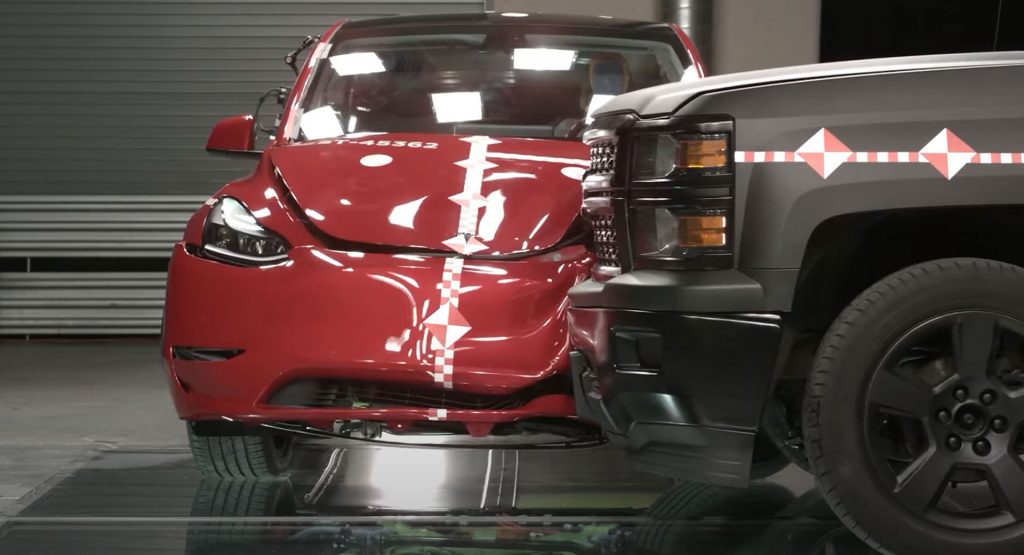Tesla may be under scrutiny by the NHTSA for its Autopilot system, but it released a video in which we discover some of the innovative ways it uses to improve the safety of its vehicles.
Industry standard crash testing used around the world only focuses on how a car performs in a handful of different predetermined crashes. However, as Tesla engineers note, no two crashes are the same, so the car manufacturer has started to source data from over 1 million vehicles that it currently has on the roads.
With this data, Tesla can run detailed crash simulations, adjusting the point of contact between a Tesla and another vehicle, or an object, by the millimeter. This also allows it to determine the precise speed and angle of an impact at which the airbags are required and those crashes where it would be safer for the airbags to not deploy.
Also: Would You Trust Tesla’s FSD Beta After Watching This Video?
In a recent test, Tesla lined up a pickup truck and a Model Y. The crash saw the pickup slam into the front quarter panel of the Model Y and according to the carmaker’s engineers, the safety system needed just 10 milliseconds to determine what kind of crash was occurring, and ultimately made the decision that it only needed to enable the airbags on the driver’s side of the EV.
Crash tests at this angle and speed are not performed by the NHTSA and IIHS, meaning Tesla can determine how its vehicles will perform in crashes they wouldn’t usually encounter during routine crash testing.



